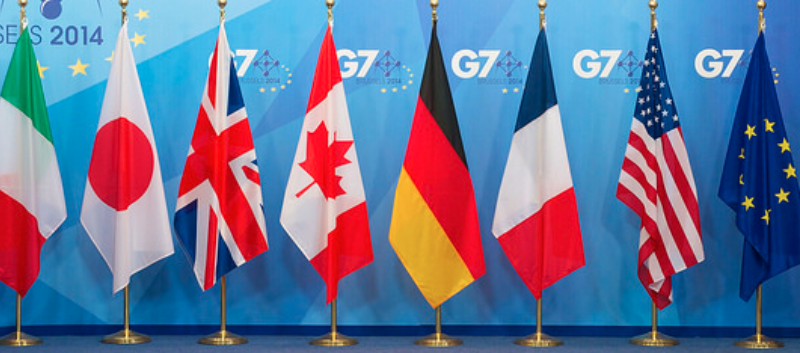G7+EU climate plans: small step but much more effort needed to close emissions gap
Share

Bonn – 04 June 2015 — The combined climate plans for the G7 and EU have made a small step towards the right track to hold warming to 2degC, but there is still a substantial emissions gap, the Climate Action Tracker said today.
Ahead of the upcoming G7 meeting in Germany, the Climate Action Tracker – an analysis carried out by four research organisations – has looked at the combined INDCs of all G7 governments and the EU, who are responsible, in aggregate, for around 30% of global greenhouse gas emissions and 40% of global GDP.
Key findings:
- Current policies in the G7+EU are projected to only stabilise emissions through to 2030 at close to present levels, whereas a rapid decline in emissions is needed.
- The combined effect of the G7+EU INDCs for 2025, and 2030 would bring the group 20-30% of the way to 2°C and 1.5°C-consistent emissions.
- There is still a gap of around 6.5, 7.6 and 7.8 GtCO2e/year in 2020, 2025 and 2030 respectively or 21%, 24% and 25% of 1990 emissions levels (excluding forestry).
- The G7+EU 2020 pledges only bring emissions 5% of the way towards emissions levels consistent with 2°C and 1.5°C in that year.
- There is a need to upgrade efforts to reduce emissions before 2020 in order to make it easier to rapidly reduce emissions in the 2020s.
- The inadequacy of the post-2020 INDC commitments compared to 2°C and 1.5°C -consistent emissions levels reinforces the need for the G7+EU to significantly improve upon the INDCs they have submitted to date – before Paris.
- The low ambition of the INDCs and the large gap between current policies and the INDCs reinforces concerns that INDC commitments be limited in time, e.g. to five years (2021-2025) to avoid locking in emissions levels that are inconsistent with the 2°C and 1.5°C emissions pathways.
“This gap shows us that it’s very clear the G7 and EU need to urgently revise their current policies. They need to review – and increase – their stated climate plans before Paris, so that the Paris Agreement can make major steps towards setting the world on a below two degree pathway” said Bill Hare of Climate Analytics.
“The G7+EU INDCs on the table now show there is an extreme risk of locking in, until 2030, high emissions levels that are inconsistent with holding warming below two degrees C and to 1.5°C. Waiting fifteen years from today to increase emissions reductions – and ten years after the 2020 agreement comes into force – could be very dangerous for the planet,” said Hare.
“Governments must take every opportunity to check against the scientific imperatives they have agreed so INDCs need to be set for review in five years’ time.”
Not all governments in G7 + EU taking similar action
“Our analysis also shows major differences between the policies the G7+EU governments have in place towards achieving their proposals,” said Kornelis Blok of Ecofys.
“While the EU’s policies would bring it close to achieving its INDC in 2030, the US, Canada and Japan still have a lot of work to do. Noting we rate Canada’s INDC and Japan’s draft INDC as ‘inadequate.’”
Effort sharing analysis shows wealthier countries must do more
The CAT has also looked at the G7+EU’s INDCs through an effort-sharing lens, and found them lacking.
“The G7+EU, as the most powerful and wealthy group of governments in the world, can do more than other, less wealthy countries. If all countries were economically equal and had the same historical responsibility, the global least-cost emissions pathway for each country would be the appropriate level of action to take. But they’re not,” said Niklas Höhne of NewClimate Institute.
“Under our effort-sharing analysis, the G7+EU’s least-cost pathways make up, at best, 50% of the way towards a fair effort sharing contribution, so there’s still a long way to go.”











